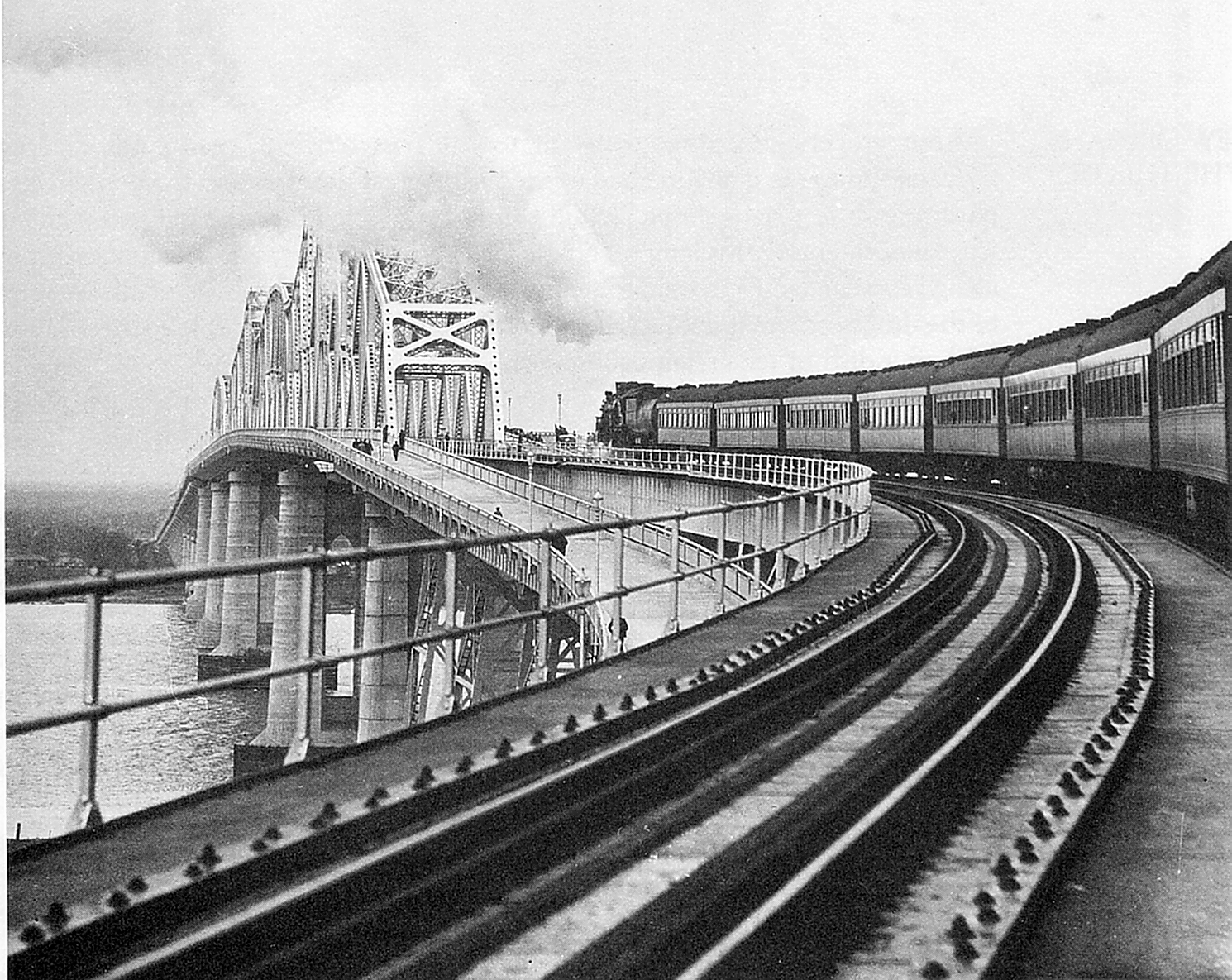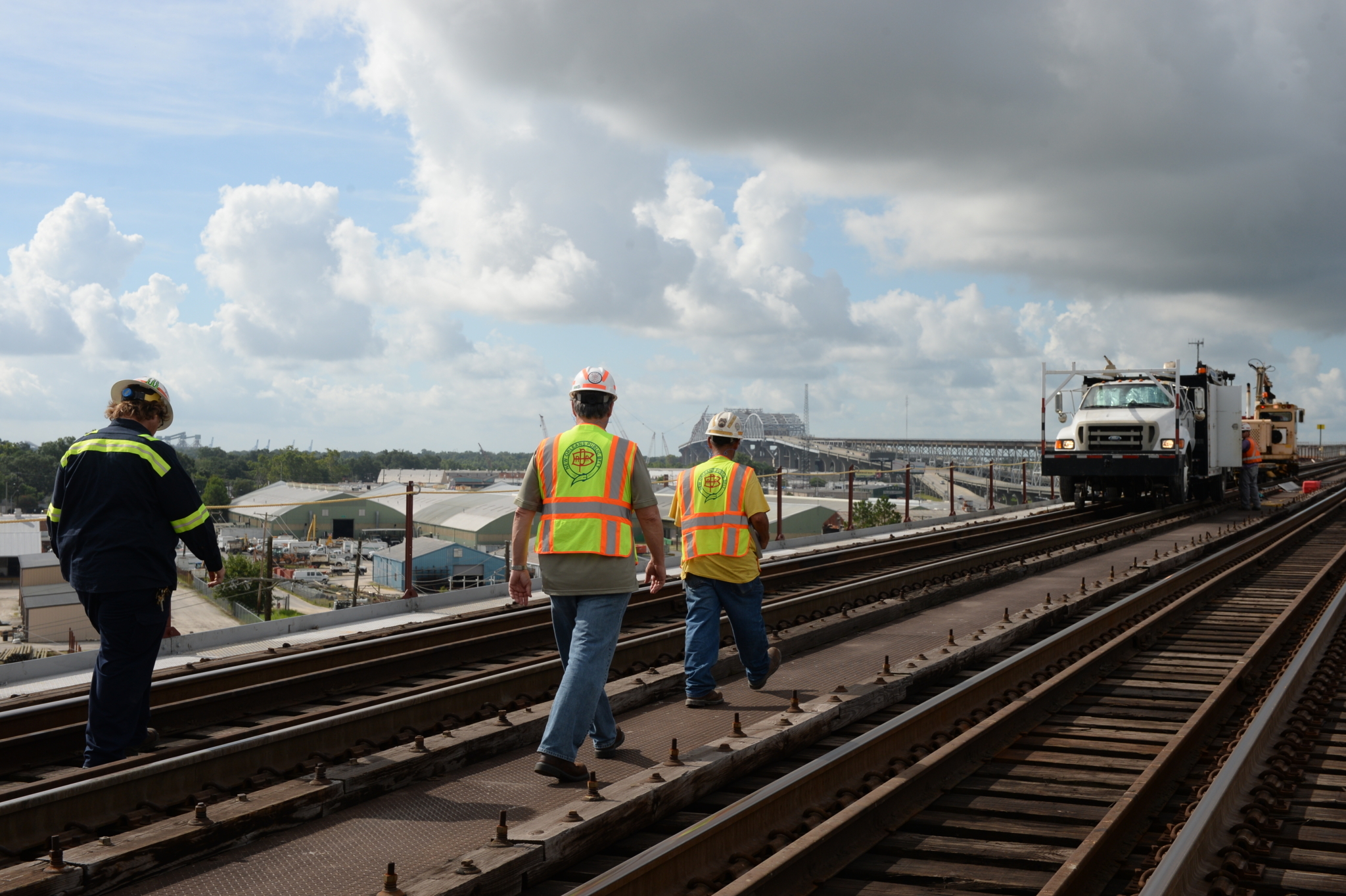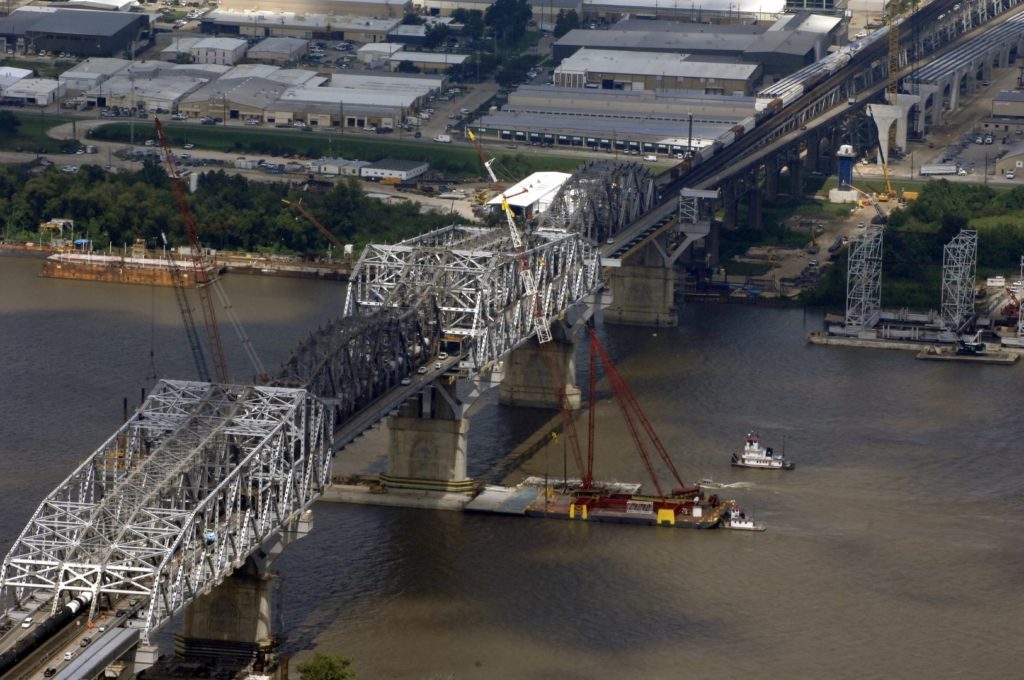The Huey P. Long Bridge, one of America’s highest and longest steel bridges, supports six lanes of vehicular traffic and two tracks of rail traffic across the mighty Mississippi daily. This amazing architectural landmark is owned by the New Orleans Public Belt Railroad (NOPB). NOPB maintains the railroad portion of the bridge, while the Louisiana Department of Transportation & Development (LADOTD) maintains the roadway portion of the structure.
Before the construction of the bridge, rail cars were transported across the river by barge. This practice, both cumbersome and time consuming, could not meet the needs of the growing region. In 1916, the State of Louisiana passed an amendment granting the City of New Orleans exclusive power to build and operate a crossing of the Mississippi River. At that point, three methods were given credence for what type of crossing to build: a tunnel, a low-level drawbridge or a high-level bridge.
Built to Last
In 1925, the engineering firm of Modjeski and Masters began their design of this iconic bridge. Following delays due to the complexity of the project and financial difficulties of the Great Depression, bonds were issued to the Public Belt Railroad Commission on November 5, 1932. Construction contracts were signed on December 30, 1932 and construction began the next day. The Huey P. Long Bridge opened for traffic in December 1935 with four lanes (two one-way) of highway traffic and two railroad tracks.

NOPB’s Bridge Department
Keeping the Huey P. Long Bridge in pristine condition takes significant manpower. A team comprised of over 20 members and management, work four days a week on the bridge, performing routine maintenance, replacing rail ties, and painting the structure. There is also a dedicated NOPB sawmill, which fabricates the bridge timbers and guardrail timbers, ensuring each piece has the required curvature and elevation. In total, there are 34,704 rail ties on the bridge. Each tie is between 10 and 14 feet long and is made of Southern Yellow Pine.

The Huey P. Long Bridge Widening Project
While adequate for 1935 highway traffic, in 1988 the State of Louisiana began to realize that the existing bridge was not meeting the traffic needs of our growing metropolitan area. In 1989, The State of Louisiana created the TIMED (Transportation Infrastructure Model for Economic Development) Program, which was designed to appropriate funding for transportation infrastructure to enhance economic development. In 2006, the $1.2 billion widening project began that would give the bridge six lanes (three one-way, 11 feet wide each lane) with shoulders. In July 2013, the widening project of the Huey P. Long Bridge was completed ahead of schedule. It has stood the test of time and has now been extended into the future with a new service life.
